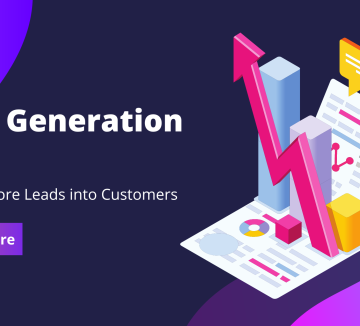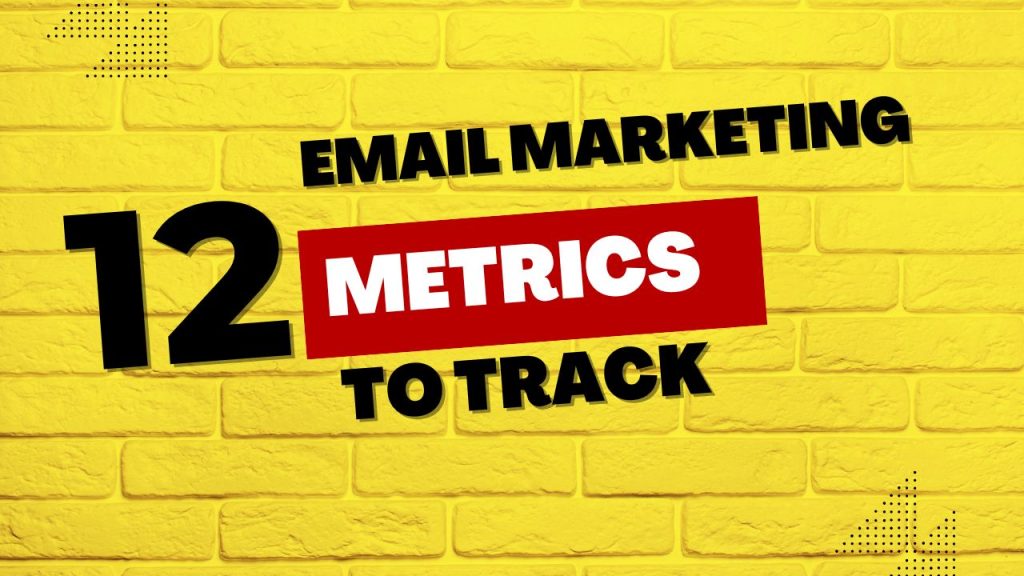Last Updated on April 6, 2023 by David
Email marketing metrics are essential for optimizing your email campaigns and driving engagement with your audience.
Simply sending emails is not enough – to achieve better results, you need to track key metrics that provide insights into your performance.
In this article, we will discuss the essential email marketing metrics to track and explain why they are important for measuring the success of your campaigns and making data-driven decisions to improve your results.
You may also like:
- 10 Proven Email Marketing Strategies Increase Open Rates
- How To Design A Successful Direct Mail Campaign
- The Ultimate Guide to Email Marketing
Importance of Tracking Email Marketing Metrics
Email marketing is one of the most effective ways to reach and engage with your audience.
However, simply sending emails is not enough – it’s essential to track your email marketing metrics to measure the success of your campaigns and optimize your strategies for better results.
Here are 5 key reasons why tracking email metrics is important:
- Measure the effectiveness of your campaigns:
Email marketing metrics provide insights into how your campaigns are performing, allowing you to measure the effectiveness of your content, targeting, and overall strategy.
By tracking metrics like open rate, click-through rate, and conversion rate, you can identify what’s working and what’s not, and adjust your campaigns accordingly.
- Optimize your strategies for better results:
With the insights gained from tracking metrics, you can optimize your email marketing strategies for better results.
For example, if your open rates are low, you may need to adjust your subject lines or improve the quality of your content.
If your click-through rates are low, you may need to improve the relevance and targeting of your offers.
- Identify areas for improvement:
Tracking email metrics can also help you identify areas for improvement in your email marketing strategy.
For example, if your bounce rate is high, you may need to improve your list hygiene and remove inactive or invalid subscribers.
If your unsubscribe rate is high, you may need to adjust your frequency or targeting to better align with your subscribers’ interests.
- Make data-driven decisions:
By tracking email metrics, you can make data-driven decisions to improve your campaigns and achieve better results.
Rather than guessing what might work, you can use data to inform your decisions and make strategic changes that drive better engagement and conversions.
- Measure ROI
Email marketing metrics can also help you measure the ROI of your campaigns and justify your marketing spend.
By tracking revenue metrics and comparing them to the cost of your campaigns, you can demonstrate the value of your email marketing efforts and make informed decisions about future investments.
Now that we have looked at the benefits of tracking email metrics, let’s turn to some of the Key email Metrics to Track.
Here are the key email marketing metrics that you should be tracking:
I. Email Open Rate Metrics
The email open rate refers to the percentage of people who opened your email.
The open rate is important because it indicates the effectiveness of your subject line and how well your content resonates with your audience.
Factors affecting open rate metrics include your subject line, the sender name, and the time you send your emails.
To calculate your open rate, divide the number of opens by the number of emails sent and multiply by 100.
Tips for improving Email open rate metrics:
- Personalize your subject lines to make them more engaging and relevant to your audience.
- Test different subject lines to see which ones perform best.
- Segment your list to send more targeted emails.
II. Email Click-Through Rate Metrics
The click-through rate (CTR) is the percentage of people who click on a link in your email.
The CTR is an important metric because it indicates how engaged your audience is with your content.
Factors affecting CTR metrics include the placement of your links, your content’s relevance, and your email’s design.
To calculate your CTR, divide the number of clicks by the number of emails sent and multiply by 100.
Tips for improving Email CTR metrics:
- Use clear and concise language to communicate your message.
- Include a clear call-to-action (CTA) that stands out from the rest of the content.
- Test different types of content to see what resonates best with your audience.
III. Email Conversion Rate Metrics
The conversion rate is the percentage of people completing a desired action after clicking through your email.
The conversion rate is important because it indicates how effectively your email drives desired actions, such as purchases or sign-ups.
Several factors can affect your conversion rate, including the design of your landing page, the relevance of your content, and the ease of the conversion process.
To calculate your conversion rate, divide the number of conversions by the number of clicks and multiply by 100.
Tips for improving conversion rate metrics:
- Optimize your landing pages for conversions.
- Use clear and compelling copy to communicate the desired action’s benefits.
- Test different offers to see what resonates best with your audience
IV. Email Bounce Rate Metrics
The bounce rate is the percentage of undeliverable emails returned to the sender.
The bounce rate is an important metric because it indicates the health of your email list and the quality of your email content.
Factors affecting bounce rate metrics include the quality of your email list, the type of email you are sending, and your email content.
To calculate your bounce rate, divide the number of bounced emails by the number of emails sent and multiply by 100.
Tips for improving bounce rate metrics:
- Keep your email list clean by regularly removing inactive subscribers.
- Use a double opt-in process to ensure your subscribers are interested in your content.
- Use a recognizable sender name and email address to increase deliverability.
V. Email Unsubscribe Rate Metrics
The unsubscribe rate is the percentage of subscribers who opt out of receiving your emails.
The unsubscribe rate is important because it indicates how relevant and valuable your content is to your audience.
Several factors can affect your unsubscribe rate, including the frequency of your emails, the relevance of your content, and the quality of your email list.
To calculate your unsubscribe rate, divide the number of unsubscribes by the number of emails sent and multiply by 100.
Tips for improving unsubscribe rate metrics:
- Segment your list to send more targeted and relevant content.
- Set expectations for email frequency and stick to it.
- Use engaging and valuable content to keep subscribers interested.
VI. Email Revenue Metrics
Revenue metrics are the metrics that track the financial impact of your email campaigns.
Revenue metrics are important because they provide insights into the financial impact of your campaigns and help you understand the ROI of your email marketing efforts.
Factors affecting revenue metrics include your email content, the type of offer you are promoting, and the quality of your email list.
Use tracking codes or unique links to track sales generated by your emails to calculate your revenue metrics.
Tips for improving revenue metrics:
- Segment your list and send targeted emails to subscribers who are most likely to make a purchase.
- Personalize your content to make it more engaging and relevant.
- Test different offers to see what resonates best with your audience.
VII. Email Complaint Rate Metrics
The complaint rate is the percentage of people who marked your email as spam or reported it as unwanted.
The importance of complaint rate metrics is it indicates the quality of your email content and the effectiveness of your email list-building efforts.
Factors affecting complaint rate metrics include the quality of your email list, the frequency of your emails, and the relevance of your content.
To calculate your complaint rate, divide the number of complaints by the number of emails sent and multiply by 100.
Tips for improving email complaint rate metrics:
- Use a double opt-in process to ensure your subscribers are interested in your content.
- Keep your email list clean by regularly removing inactive subscribers.
- Use engaging and valuable content to keep subscribers interested and avoid spam complaints.
VIII. Email Forward Rate Metrics
The forward rate is the percentage of people who forwarded your email to someone else.
The forward rate is an important metric because it indicates the virality of your content and how likely your audience is to share it with others.
Several factors can affect your forward rate, including the quality of your email content, your offer’s relevance, and your subscribers’ trust and loyalty.
To calculate your forward rate, divide the number of forwards by the number of emails sent and multiply by 100.
Tips for improving Email forward rate metrics:
- Use engaging and shareable content that encourages subscribers to share with their networks.
- Include a clear call-to-action (CTA) that prompts subscribers to forward the email.
- Incentivize sharing by offering a referral program or exclusive discounts for sharing.
IX. Email List Growth Rate Metrics
The list growth rate is the rate at which your email list is growing.
The list growth rate indicates the success of your email list-building efforts and how effectively you are reaching new audiences.
Factors affecting list growth rate metrics include the quality of your lead magnet or offer, the visibility of your sign-up form, and the targeting of your advertising campaigns.
To calculate your list growth rate, subtract the number of unsubscribes and bounces from the number of new subscribers and divide by the total number of subscribers. Multiply by 100 to get the growth rate percentage.
Tips for improving list growth rate metrics:
- Offer a compelling lead magnet or incentive to encourage sign-ups.
- Make your sign-up form visible and easy to find on your website and social media channels.
- Use targeted advertising campaigns to reach new audiences and attract relevant subscribers.
X. Subscriber Engagement Metrics
Subscriber engagement metrics are the metrics that track how engaged your audience is with your email content.
The subscriber engagement metrics provide insights into how interested and loyal your audience is and how likely they are to take action on your emails.
Factors affecting subscriber engagement metrics include the relevance and quality of your content, the frequency and timing of your emails, and the segmentation and personalization of your emails.
There are several engagement metrics to track, including the number of opens, clicks, forwards, and shares. You can also track the time spent on your website and the number of pages visited after clicking through from an email.
Tips for improving subscriber engagement metrics:
- Segment your list to send more targeted and relevant content.
- Use personalization to make your content more engaging and relevant.
- Test different types of content and frequency to see what resonates best with your audience.
XI. A/B Testing Metrics
A/B testing metrics are the metrics that track the results of your A/B tests.
A/B testing metrics are important because they provide insights into what works and what doesn’t, and help you optimize your campaigns for better results.
Factors affecting A/B testing metrics are the variables you are testing, the size and segmentation of your test groups, and the duration and timing of your tests.
A/B testing metrics Tips:
- Test one variable at a time to accurately measure the impact of each change.
- Use large enough test groups to ensure statistically significant results.
- Track and analyze your results to make data-driven decisions.
XII. Segmentation Metrics
Segmentation metrics are the metrics that track the results of your segmented email campaigns.
Segmentation metrics are important because they provide insights into the effectiveness of your targeting and personalization efforts and help you optimize your campaigns for better results.
Several factors can affect the results of your segmented campaigns, including the quality and relevance of your segmentation criteria, the type and frequency of your campaigns, and the level of personalization in your content.
Segmentation metrics can include open rates, click-through rates, conversion rates, and revenue metrics for each segment of your list.
Tips for improving Email segmentation metrics:
- Use relevant and specific segmentation criteria to target your campaigns more effectively.
- Use personalized content to increase engagement and relevance.
- Test different segmentation strategies and analyze your results to optimize your campaigns.
Tracking email marketing metrics is essential for measuring the success of your campaigns and optimizing your strategies for better results.
While there are many tools available for tracking email marketing metrics, not all are created equal. Here are the top 5 tools for tracking email marketing metrics and their key features.
Google Analytics
Google Analytics is a powerful web analytics tool that can be used to track email marketing metrics.
By setting up conversion tracking and linking your email marketing platform to Google Analytics, you can track key metrics like open rate, click-through rate, conversion rate, and revenue.
Google Analytics also provides detailed insights into user behavior, allowing you to understand better how your audience interacts with your website and email campaigns.
Mailchimp
Mailchimp is an all-in-one email marketing platform that includes powerful analytics tools for tracking email marketing metrics.
With Mailchimp, you can track key metrics like open rate, click-through rate, conversion rate, bounce rate, and unsubscribe rate.
Mailchimp also includes advanced segmentation and A/B testing features, allowing you to better target your audience and optimize your campaigns for better results.
HubSpot
HubSpot is a powerful marketing automation platform that includes robust email marketing and analytics tools.
With HubSpot, you can track key metrics like open rate, click-through rate, conversion rate, and revenue.
HubSpot also includes advanced segmentation and personalization features, allowing you to deliver highly targeted and relevant content to your audience.
Constant Contact
Constant Contact is an email marketing platform with powerful analytics tools for tracking email marketing metrics.
With Constant Contact, you can track key metrics like open rate, click-through rate, conversion rate, bounce rate, and unsubscribe rate.
Constant Contact also includes advanced list management and segmentation features, allowing you to target your audience better and optimize your campaigns for better results.
Campaign Monitor
Campaign Monitor is an email marketing platform with advanced analytics tools for tracking email marketing metrics.
With Campaign Monitor, you can track key metrics like open rate, click-through rate, conversion rate, bounce rate, and unsubscribe rate.
Campaign Monitor also includes advanced A/B testing and segmentation features, allowing you to better target your audience and optimize your campaigns for better results.
Tracking email marketing metrics is essential for measuring the success of your campaigns and optimizing your strategies for better results.
By using one of these top 5 tools for tracking email marketing metrics, you can gain valuable insights into your performance and make data-driven decisions to achieve better engagement and conversions with your audience.
Conclusion:
Email marketing metrics are essential for measuring the success of your email campaigns and optimizing your strategies for better results.
Key metrics to track include open rate, click-through rate, conversion rate, bounce rate, unsubscribe rate, revenue metrics, complaint rate, forward rate, list growth rate, subscriber engagement metrics, A/B testing metrics, and segmentation metrics.
Regularly tracking email marketing metrics is crucial for understanding the effectiveness of your campaigns and making data-driven decisions to improve your results.
By tracking metrics, you can identify areas for improvement, optimize your campaigns, and ultimately drive better engagement and conversions.
If you’re not already tracking your email marketing metrics, now is the time to start. Use the tips and best practices outlined in this article to track and analyze your metrics regularly, and use the insights you gain to optimize your campaigns for better results.
With the right approach and tools, you can take your email marketing to the next level and achieve greater success in reaching and engaging your audience.




